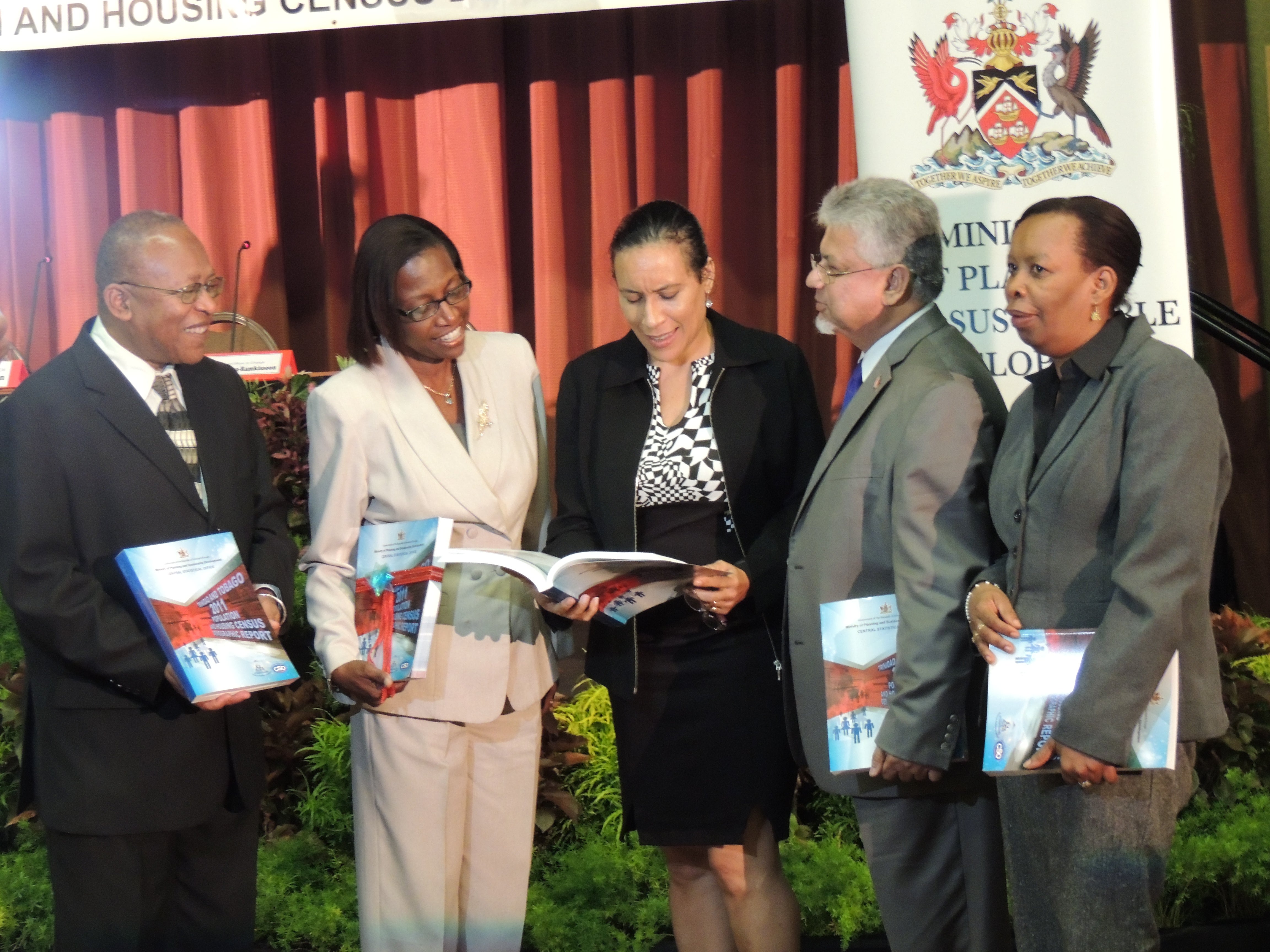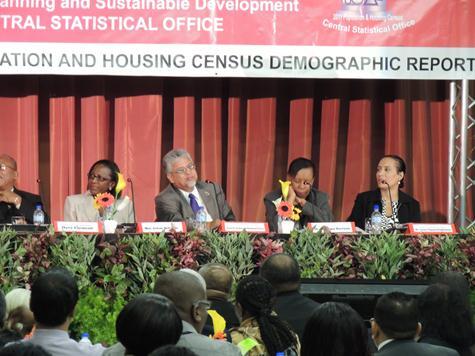The Government of the Republic of Trinidad and Tobago launched its 2011 Population and Housing Census Demographic Report on 19 February 2013. Having commenced the field work in early 2011, it is the first time in the country’s history that it took less than two (2) years to deliver the completed report. It is also the third (3rd) amongst Caribbean Community (CARICOM) countries to release a report from the 2011 censuses. Key technical assistance and capacity building was provided by UNFPA in the production of the 2011 Census, particularly in its design, in the cleaning and coding of data, and in the production of the statistical tables.
Some of the findings noted in the launch were:
- A slowdown of population growth by one-tenth of a percentage point from ten (10) years ago with a current population of 1,328,019 comprising 666,305 males and 661,714 females.
- An aging population with its ratio of persons 65 years and over relative to the population of 15 years and younger at 30, with close to one half of the population over the age of 40 (520,351) and significant declines in the population ages 10-19.
- Declines in the population of the nation’s two (2) major cities.
- Increases in the number of households, but declines in household size.
- 29.8% of the population received up to primary education; 43.5% up to secondary education; and 14.6% exposed to some tertiary education, with more women than men with tertiary education.

The release of the Demographic report is quite timely, as Trinidad and Tobago, with continued support from UNFPA, engages in a Population Situation Analysis, which will inform the development of a national population policy. Data will be used to appraise the linkages and impacts between population and reproductive health dynamics and poverty, inequality and development overall. The Population Policy will help to mainstream population dynamics, reproductive health and gender issues into national development strategies, in keeping with the Government’s medium term policy framework 2011 - 2014. Furthermore, the data emanating from the census will help the Government and other stakeholders to assess progress in meeting the Millennium Development Goals (MDG) and the Programme of Action agreed to at the 1994 International Conference on Population and Development (ICPD).
The Demographic Report is just one major report produced from the Census. Other reports are expected. UNFPA will continue its support to Trinidad and Tobago in the production of these reports by providing technical support for the development of a computer assisted coding application for the description of certain variables such as Occupation, Industry and Religion; in data analysis and dissemination; and in the production of information products.
The Demographic report can be accessed at the Central Statistical Office’s new website at http://www.cso.gov.tt/. UNFPA looks forward to further collaboration with the Government of Trinidad and Tobago as it produces and assesses its data to inform national development.


